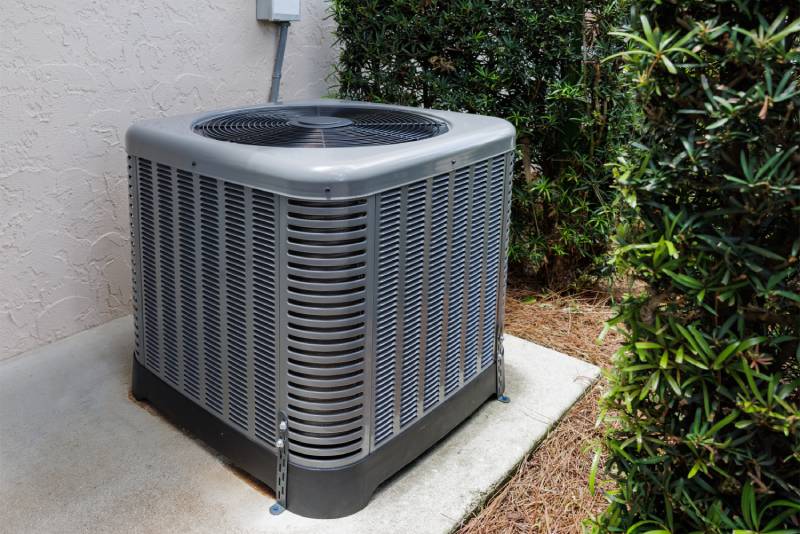When it comes to maintaining a comfortable home, few things are more important than indoor air quality. Beyond just controlling temperature, air quality influences everything from your health to the efficiency of your HVAC system. As homeowners increasingly become aware of the impact of air quality on both their well-being and their energy bills, it has become clear that making improvements to indoor air quality can be a cost-effective strategy for reducing overall HVAC expenses.
By optimizing your HVAC system for better air quality, you not only improve comfort and health but also unlock significant cost-saving potential. In this article, we’ll explore some of the best ways to leverage air quality in HVAC systems to save on energy costs, prolong the lifespan of your unit, and create a healthier living environment.
1. Invest in High-Efficiency Air Filters
One of the simplest yet most effective ways to improve air quality while reducing HVAC costs is to upgrade to high-efficiency air filters. Standard air filters do a basic job of capturing dust and debris, but high-efficiency filters, such as those with a high MERV (Minimum Efficiency Reporting Value) rating or HEPA (High-Efficiency Particulate Air) filters, are designed to capture much smaller particles like pollen, bacteria, and even pet dander.
By improving your air quality, these filters help your HVAC system operate more efficiently. Cleaner air means less strain on the system, as it doesn’t have to work as hard to circulate the air through your home. The less your HVAC system is strained, the more energy-efficient it becomes, ultimately reducing your monthly energy bills.
Tip: Change your filters regularly—every 1 to 3 months, depending on your filter type and household conditions (e.g., pets, allergies, etc.). Clogged filters reduce airflow, causing the system to work harder and consume more energy.
2. Utilize a Programmable Thermostat with Air Quality Monitoring
One of the best ways to reduce energy costs and improve air quality in your home is by investing in a smart or programmable thermostat. These devices allow you to set specific temperature ranges and timeframes for heating and cooling, which ensures your HVAC system runs only when needed. In addition to temperature control, many modern thermostats come equipped with air quality monitoring sensors that track the concentration of pollutants, humidity, and ventilation levels in your home.
By continuously monitoring air quality and adjusting the HVAC system’s operations, these thermostats ensure that air quality is maintained while preventing unnecessary energy consumption. For example, the thermostat may detect poor air quality and automatically adjust the fan speed or activate a higher-efficiency mode. This reduces the need for manual adjustments and helps keep your system operating at peak efficiency, ultimately leading to savings on your heating and cooling bills.
Tip: Set your thermostat to adjust temperatures while you are asleep or away to reduce unnecessary energy use. When your home is unoccupied, you don’t need the HVAC system to work at full capacity.
3. Seal Ducts and Prevent Air Leaks
Air leaks in your home or HVAC system can significantly reduce both air quality and energy efficiency. Poorly sealed ducts can lead to the infiltration of dust, dirt, and pollutants, which decreases the quality of the air circulating through your home. Additionally, these leaks cause your HVAC system to work harder to heat or cool the space, leading to increased energy usage.
Sealing your ducts properly ensures that air flows efficiently, without the escape of conditioned air into unheated spaces like attics or crawlspaces. Not only does this improve air quality by keeping contaminants out of the system, but it also enhances energy efficiency by preventing costly heat loss and ensuring that the HVAC system uses less energy to maintain a comfortable temperature.
Tip: Hire a professional to inspect your ducts for leaks and seal them with mastic sealant or use a foil tape designed for ductwork. Proper insulation around ducts, particularly those in unconditioned spaces, can also help maintain better airflow and energy efficiency.
4. Install a Whole-House Air Purification System
For homeowners looking to take air quality to the next level, installing a whole-house air purification system can significantly improve indoor air. These systems are designed to filter out a wide range of airborne contaminants, including dust, pet dander, smoke, bacteria, viruses, and even mold spores. Some systems, such as UV light air purifiers, work by using ultraviolet light to kill harmful microorganisms as the air passes through the system.
The benefits of an air purification system go beyond just cleaner air. By preventing the buildup of dust, dirt, and debris in your HVAC system, you can also extend the life of your unit and reduce maintenance costs. Additionally, cleaner air results in less frequent filter changes, reducing the long-term costs associated with maintaining your HVAC system.
Tip: Consider an air purification system with a HEPA filter for superior particle removal. Be sure to clean and maintain the system regularly to keep it functioning at its best.
5. Control Humidity Levels
Humidity plays a crucial role in both indoor air quality and HVAC efficiency. Too much moisture in the air can lead to the growth of mold, mildew, and bacteria, while excessively dry air can irritate your respiratory system and cause discomfort. Both extremes also put additional strain on your HVAC system.
By installing a whole-house dehumidifier or humidifier, you can maintain optimal humidity levels (ideally between 30-50%). This not only helps prevent mold growth and improves air quality but also reduces the load on your HVAC system. A well-maintained humidity level ensures that your HVAC system doesn’t have to work overtime to cool or heat the air to your desired temperature, which helps keep energy bills in check.
Tip: Invest in a humidifier during the winter months to prevent overly dry air, and consider a dehumidifier in the summer to control excess moisture.
6. Invest in Energy Recovery or Heat Recovery Ventilators
Energy recovery ventilators (ERVs) and heat recovery ventilators (HRVs) are advanced systems designed to improve both ventilation and energy efficiency in HVAC systems. These devices are particularly useful in tightly sealed homes, where natural ventilation is limited. ERVs and HRVs work by exchanging stale indoor air with fresh outdoor air, while also recovering heat or energy from the outgoing air to condition the incoming air. This process not only ensures a continuous flow of fresh air but also maintains energy efficiency by reducing the need for heating or cooling the incoming air.
In terms of cost savings, these systems are highly effective. They keep indoor air fresh while allowing your HVAC system to operate more efficiently, reducing the overall workload and energy consumption. By improving ventilation without wasting energy, these systems provide significant savings on heating and cooling costs over time.
Tip: If your home is well-sealed and has limited airflow, investing in an ERV or HRV could be a smart move for both air quality and energy efficiency.
7. Perform Regular HVAC Maintenance
Routine maintenance is key to keeping your HVAC system running smoothly, and it plays a critical role in both air quality and energy efficiency. Regular service checks by a professional HVAC technician can ensure that your system is functioning at peak performance. During these checks, technicians will clean coils, lubricate moving parts, and inspect the air filters, ductwork, and other components of the system.
By addressing issues early on—such as clogged filters, dirty coils, or malfunctioning components—you can avoid costly repairs and ensure that your HVAC system continues to deliver high-quality air with minimal energy usage.
Tip: Schedule professional HVAC maintenance twice a year—once before summer and once before winter—to ensure your system is prepared for the heating and cooling seasons.
Conclusion
The quality of air in your home has a direct impact on both your health and the efficiency of your HVAC system. By making strategic improvements to your system’s filtration, ventilation, and humidity control, you can significantly reduce energy costs while improving indoor air quality. From investing in high-efficiency air filters to upgrading your HVAC system with advanced purification and ventilation technologies, there are numerous ways to achieve both a healthier and more cost-effective home environment.
By incorporating these cost-saving secrets into your HVAC maintenance routine, you’ll not only enjoy better air quality but also experience the benefits of lower energy bills and a longer-lasting system. It’s a win-win scenario for both your home and your wallet.

